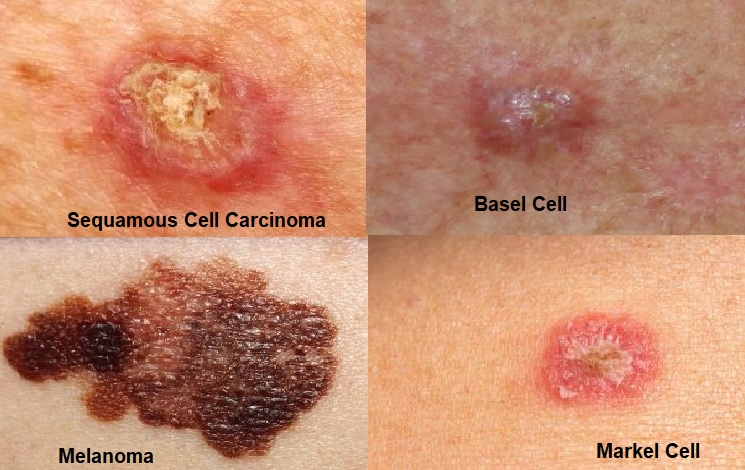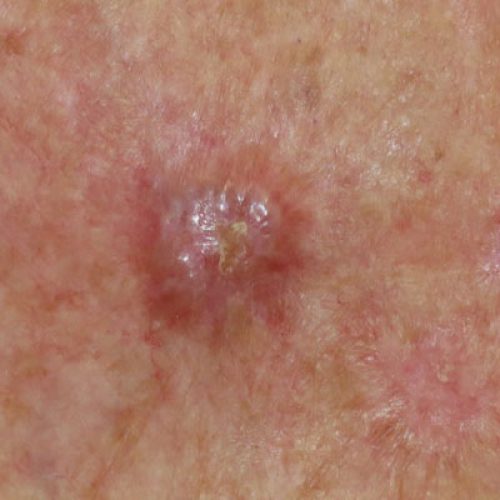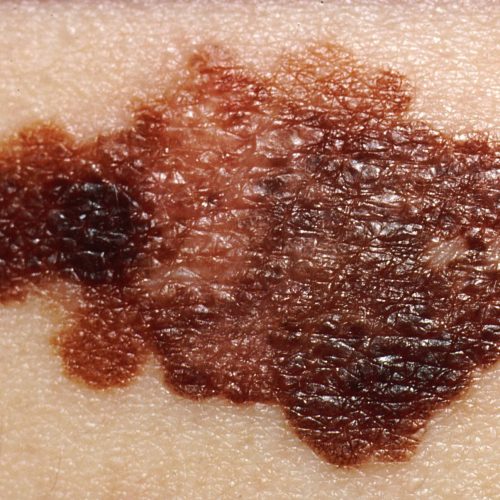
Skin Cancer Types & Symptoms
Skin cancer has three main types – Basal cell, squamous cell and melanoma. Of these three, Basal cell carcinoma affects most patients while melanoma is the most dangerous as it spreads very fast.
The most common skin cancer cases are Basal cell carcinomas, which are usually found on those parts of the body such as the neck and face that are exposed to the UV rays of the sun.
Basal cell skin cancer symptoms normally appear as a shiny lump and generally grows very slowly; it doesn’t spread easily to other parts of the body but can damage the surrounding tissues and can therefore damage parts of the body surrounding the area affected by cancerous growth.
The causes of skin cancer are not just UV rays of the sun but many others.
Basal Cell Carcinoma

Basal cell carcinoma, which is commonly known as rodent ulcer is the most common type of skin cancer accounting for around 80% of all the cases of skin cancer.
Detection of early stage basal cell carcinoma can be very important in getting it treated effectively, with minimal scarring. At this stage the disease affects the lower section of the epidermis or basal cell layer.
Exposure to the ultra violet (UV) rays of the sun are among the main basal cell carcinoma risk factors although tanning beds are also an important cause.
People with light skin colour usually have very little pigment protection on their skin and are at high risk of getting damaged by UV radiation from the sun.
There are several basal cell carcinoma symptoms and these could be an open sore, skin growth with dented centre and an elevated outline, a reddened area, a bump or lump, or an area that looks like a scar.
Among the types of basal cell carcinoma the most common variant accounts for about 6-8 cases out of every 10 is the nodular basal cell carcinoma. The other variants of basal cell carcinoma are cystic, sclerodermiform, infiltrated and micronodular among others.
The most effective treatment of basal cell carcinoma is possible when it is detected at an early stage.
Squamous Cell Carcinoma

Squamous cell carcinoma causes are primarily due to over-exposure to UV rays of the sun like in most other cases of skin cancer. It begins at the outer epidermal layer of the skin as well as the mucuous membranes.
The squamous cell carcinoma symptoms can be identified as scaly patches that appear red, or lumps with depression in the centre, skin growth that appear like warts, nodules or open sores.
People with light skin are more likely to be affected by squamous cell carcinoma due to over-exposure to UV rays of the sun. However, it is quite possible for people with darker skin to also get affected by the disease especially if they carry some kind of inflammation or burn injury.
As with all other types of skin cancer, squamous cell carcinoma treatment is most effective when it is detected at an early stage. There are several treatment options depending on the level of the disease spread.
Melanoma

Like all other types of skin cancer, melanoma causes are due to over-exposure to the ultra-violet (UV) rays of the sun. There could be other causes though.
Melanoma occurs in melanin, which is a skin pigment generated by cells known as melanocytes. The melanoma symptoms are usually dark brown, black or multi-coloured in appearance and can get crusted at the borders; thereafter it begins to bleed.
The people most likely to be affected are those who have light skin colour as well as those who have had melanoma previously. Notably, melanoma is known to spread very fast and is hence considered to be very dangerous.
Melanoma diagnosis at an early stage is absolutely important for a patient to prevent the disease from spreading to other parts of the body.
Early detection is the best chance of melanoma prevention for a patient. Of all the types of skin cancer, melanoma is considered to be the most serious and dangerous.
Depending on the location of melanoma or how much it has spread across the victim’s body, melanoma treatment will be advised by doctors.

